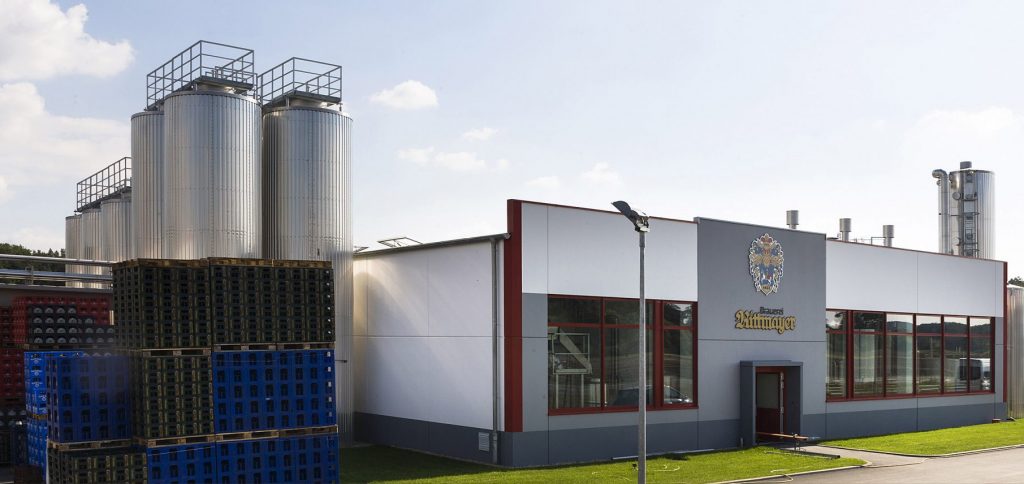Comeback of regional specialty beers

In many cases, when small or medium-sized regional breweries are passed on to the next generation, it can result in an exciting reorientation. The rise of the international craft-beer scene is forcing the new generation of beer brewers to master the balancing act between things traditional and modern.
Anyone who is familiar with the specialty beers of Brauerei Rittmayer would find it hard to believe that the Upper Franconian brewery will soon be celebrating its 600th anniversary. Its portfolio currently includes fifteen completely different beer varieties and alternating seasonal beers—a novelty for a medium-sized brewery. Once operated under the auspices of a local count, today the family enterprise with a yield of some 35,000 hectoliters per year is run by Georg Rittmayer. Above all, the brewery is known for its unusual specialty beers. Thanks to a peaty smoked beer called “Smokey George”, the historical brewery regularly receives medals at international beer awards such as the European Beer Star, which will be represented again at this year’s drinktec. Rittmayer still emphasizes tradition on the one hand, but the brewery also experiments frequently with special malts and new types of hops—which is exactly the combination that makes it so popular with consumers.
Craft-beer scene: Between traditional and modern
The comeback of regional specialty beers can be traced to a trend that has been prevalent for several years: More and more consumers reflect on regional, hand-made and above all original products. Interest in unusual specialty beers is also growing due to the international craft-beer scene. After years in which breweries across Germany have perished, owners of independent regional breweries have stopped the erosion in their industry and set a new course. In addition to their standard range of products, they are focusing on recipes handed down by their ancestors and modernizing their classics using unusual hops and malt combinations, which are particularly popular among younger target groups. “Regional breweries are currently experiencing a veritable Renaissance,” confirms Holger Eichele, head of the German Brewers’ Association. According to Eichele, the market for small and medium-sized breweries is growing at a rapid pace again.
Right now there are dozens of traditional operations that are riding the wave of success—the majority of them in “beer country” Bavaria, which has more than 600 breweries. Besides Rittmayer, Rudolf Hirz is also considered a model example of the new generation of beer brewers. Following an earlier bankruptcy, the brewer from Lower Bavaria reanimated his Apostelbräu brand in Hauzenberg in the county of Passau with new specialty beers and has been celebrating his success ever since. He specializes in ancient grain types such as wild emmer, einkorn, spelt and oat. He also puts his money on craft beers and now brews a pale ale and a farmhouse ale. He knows that he has to distinguish himself from the masses to the greatest extent possible to enjoy success. And that appears to be working very well: Hirz’s traditional “5-grain” beer and a barrel-aged bock recently won the silver medal in Meiningers International Craft Beer Award. “The era of people always wanting to drink the same beer their entire life is over,” emphasizes Rudi Hirz.
Gathering for beer lovers
There is also no reason why visitors at the upcoming drinktec should always drink the same beer—unless they want to. That is because the place2beer area will give more than a dozen craft-beer brewers from around the world a chance to present their diverse range of beers—including the innovative startup “Hoppebräu“ from Waakirchen am Tegernsee (Bavaria). Brauerei Rittmayer will also be there with its portfolio of specialty beers. The beer scene’s most creative and exciting newcomers will introduce themselves on approximately 500 square meters of space in Hall B1 and serve traditionally modern brews as well as India pale ales, stouts, smoked beers and pale ales free of charge. That can also serve as a source of inspiration for hobby, home and craft-beer brewers: The Home & Craft platform in Hall C1 will allow exhibitors to present a wide range of solutions for brewing beer on a “small scale”. Each day will feature workshops and lectures on the latest trends in the home brewing sector. There will also be several beer tastings and panel discussions on the latest hot topics such as packaging, design, marketing as well as “women and beer” and “beer and food”. Everything you need to know about beer including topics such as ingredients and aroma hops will be covered in the supporting program.
